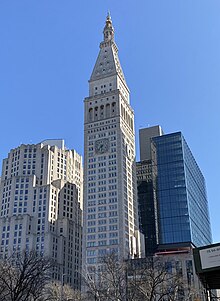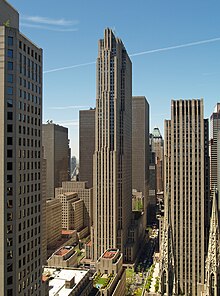Portal article 1
Portal:National Register of Historic Places/Portal article/1
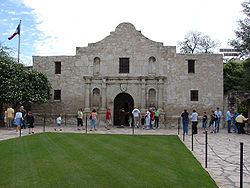
The Alamo is the name of former mission and fortress compound, now a museum, in San Antonio, Texas. The compound, which originally comprised a church and surrounding buildings, was built by the Spanish Empire in the 18th century for the education of local Native Americans after their conversion to Christianity. After its later abandonment as a mission, it was used as a fortress in the 19th century and was the scene of several military actions, including most notably the 1836 Battle of the Alamo, one of the pivotal battles between the forces of the Republic of Texas and Mexico during the Texas Revolution.
The mission was authorized in 1716 by the viceroy of New Spain. It was established two years later in 1718 by Fray Antonio de Olivares, who brought Indian converts and records with him from the San Francisco Solano Mission near San Juan Bautista on the Rio Grande. Learn more...
Portal article 2
Portal:National Register of Historic Places/Portal article/2
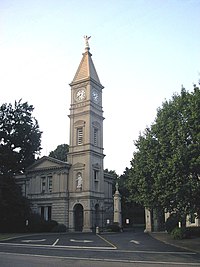
Cave Hill Cemetery is a 296-acre Victorian era National Cemetery and arboretum located at 701 Baxter Avenue, Louisville, Kentucky. It is open daily to the public from 8:00 AM to 4:45 PM (weather permitting). Its main entrance is on Baxter Avenue and there is a secondary one on Grinstead Drive. Both former Louisville mayors, for whom these streets are named (James F. Grinstead and John G Baxter), are buried in Cave Hill Cemetery.
Cave Hill was listed on the National Register of Historic Places in 1979. Cave Hill National Cemetery, containing military graves, is also on the National Register, added in 1998. Within the National Cemetery two additional items on the National Register: the 32nd Indiana Monument and the Louisville Union Monument.
Over 200 Confederate soldiers are buried in Section O. The original wooden grave markers have since been replaced by stone ones.
There were about 120,000 people interred by 2002, with space remaining for 22,000 more graves. Learn more...
Portal article 3
Portal:National Register of Historic Places/Portal article/3

Waller Hall is the oldest building on the campus of Willamette University in Salem. Built in 1867 as University Hall, the five-story, brick structure was added to the National Register of Historic Places in 1975. The building has been gutted twice by fires with the interior rebuilt each time, and went through renovations in 1987–1989 and 2005. From 1872 when the Oregon Institute building burned down until 1906 the building was the only permenat structure on campus.
Built in the Renaissance style of architecture, it is currently used for administration offices and is the oldest university building west of the Mississippi River in the U.S. still in use. Waller Hall is located on the north end of campus opposite the Oregon State Capitol building across State Street. All of the bricks used in the construction were fired on campus using clay excavated from the construction site in order to build the foundation. The school renamed the building in 1912 to Waller Hall in honor of longtime university trustee Alvin F. Waller. Waller is used for administrative functions, including housing the office of the university's president (as of 2008 M. Lee Pelton), and contains the Cone Chapel. Learn more...
Portal article 4
Portal:National Register of Historic Places/Portal article/4
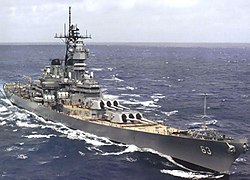
USS Missouri (BB-63) ("Mighty Mo" or "Big Mo") is a U.S. Navy battleship, and was the third ship of the United States Navy to be named in honor of the U.S. state of Missouri. Missouri is the final battleship to be built by the United States, and among the Iowa-class battleships is notable for being the site of the Japanese surrender at the end of World War II. Missouri was ordered on 12 June 1940 and her keel was laid at the New York Navy Yard in the New York City borough of Brooklyn on 6 January 1941.
During her career Missouri saw action in World War II during the Battle of Iwo Jima and the Battle of Okinawa, and shelled the Japanese home islands of Hokkaidō and Honshū. After World War II she returned to the United States before being called up and dispatched to fight in the Korean War. Upon her return to the United States she was decommissioned into the United States Navy reserve fleets, better known as the "Mothball Fleet" in 1955. She was reactivated and modernized in 1984 as part of the 600-ship Navy plan, and participated in the 1991 Gulf War.
Missouri was decommissioned a final time on 31 March 1992, having received a total of eleven battle stars for service in World War II, Korea, and the Persian Gulf. She was maintained on the Naval Vessel Register until January 1995, when her name was struck. In 1998 she was donated to the Missouri Memorial Association, and is presently a museum ship at Pearl Harbor, Hawaii. Learn more...
Portal article 5
Portal:National Register of Historic Places/Portal article/5

Ed Galloway's Totem Pole Park consists of eleven objects and one building on 14 acres (57,000 m2) in Rogers County, Oklahoma. The park is ten miles (16 km) north-east of Claremore and is located 3.5 miles (6 km) east of historic U.S. Route 66 and Foyil. It was added to the National Register of Historic Places on March 30, 1999 and is currently owned and operated by the Rogers County Historical Society and the Foyil Heritage Association. The park's main totem pole is claimed to be the "World’s Largest Concrete Totem Pole."
After more than 20 years as a manual arts teacher at the Children’s Home orphanage in Sand Springs, OK, in 1937 Ed Galloway retired and moved his family to a small farm near Foyil. Shortly afterwards, he embarked on an ambitious folk art project to create a three-dimensional totem pole using modern building materials. After eleven years of work, Galloway’s totem pole was completed in 1948 and topped out at approximately 90 ft (27 m) in height. The totem pole’s construction took six tons of steel, 28 tons of cement, and 100 tons of sand and rock. The base is 30 ft (9 m) wide and rests on the back of a colourfully painted turtle. It is decorated with approximately 200 bas relief images of brightly colored Native American portraits, symbols, and animal figures that cover the entire totem pole from the base to its pinnacle. Learn more...
Portal article 6
Portal:National Register of Historic Places/Portal article/6

Kawaiahaʻo Church (or Ka wai a Haʻo) is a historic Congregational church located in Downtown Honolulu on the Hawaiian Island of Oʻahu. At one time the national church of the Hawaiian Kingdom and chapel of the royal family, Kawaiahaʻo Church is popularly known as Hawaiʻi's Westminster Abbey. It is one of the oldest standing Christian places of worship in Hawaiʻi, although four thatched churches stood at or near the present site before construction of the stone church. It is designated as a National Historic Landmark on the National Register of Historic Places. Learn more...
Portal article 7
Portal:National Register of Historic Places/Portal article/7

The John A. Roebling Suspension Bridge spans the Ohio River between Cincinnati, Ohio and Covington, Kentucky. When the first pedestrians crossed on December 1, 1866, it was the longest suspension bridge in the world at 1,057 feet (322 m), a status it maintained until 1883. Today, many pedestrians use the bridge to get between the arenas in Cincinnati (Paul Brown Stadium, Great American Ball Park, and U.S. Bank Arena) and the hotels and parking lots in Northern Kentucky.
The bridge was listed on the National Register of Historic Places in 1975 and designated a National Historic Civil Engineering Landmark in 1983. It remains the busiest of Cincinnati's four non-expressway automobile or pedestrian bridges. Initially called the "Covington-Cincinnati Suspension Bridge," it was renamed in honor of its designer and builder on June 27, 1983.
The state of Kentucky closed the bridge on November 13, 2006 to make extensive repairs to the structure. It was scheduled to reopen April 22, 2007, but reopened about a month ahead of schedule in late March. However, it will close again for much of 2008 for repainting. Learn more...
Portal article 8
Portal:National Register of Historic Places/Portal article/8

The Indiana Soldiers' and Sailors' Monument is a 284-feet tall neoclassical oolitic limestone and bronze monument in the center of Indianapolis (and Marion County, Indiana). It was erected to honor Hoosiers who were veterans of the American Revolution, territorial conflicts that partially led up to the War of 1812, the Mexican–American War, and the US Civil War. It was designed by German architect Bruno Schmitz, and was completed in 1901. In addition to its external commemorative statuary and fountains, the basement of the monument is the Colonel Eli Lilly Museum, a museum of Indiana history during the American Civil War. There is also an observation deck that can be reached by stairs for free or by elevator for a $1.00 charge.
The circle is the standard symbol of the city of Indianapolis, and the city's flag is an iconic representation of Monument Circle and the two streets (Meridian and Market) that feed into and out of it. One of Indy's recognizable nicknames, "the Circle City" comes from Monument Circle. At one time, it was illegal to build any building taller than the monument within Indianapolis city limits, although there are now many skyscrapers exceeding its size.
The poem America, Messiah of Nations was written by James Whitcomb Riley for the dedication of the monument and was transformed into a march by John Philip Sousa. Both Riley and Sousa performed the poem and march at the dedication ceremonies. Learn more...
Portal article 9
Portal:National Register of Historic Places/Portal article/9

Manzanar is most widely known as the site of one of ten concentration camps where over 110,000 Japanese Americans were imprisoned during World War II. Located at the foot of the Sierra Nevada in California's Owens Valley between the towns of Lone Pine to the south and Independence to the north, it is approximately 230 miles (370.1 km) northeast of Los Angeles. Manzanar (which means "apple orchard" in Spanish) was identified by the United States National Park Service as the best-preserved of the former camp sites, and it is now the Manzanar National Historic Site.
Long before the first prisoners arrived in March 1942, Manzanar was home to Native Americans, who mostly lived in villages near several creeks in the area, and then to the ranchers and miners who established the town of Manzanar in 1910, but had abandoned the town by 1929 after the City of Los Angeles purchased the water rights to virtually the entire area. As different as these groups might seem, they are tied together by the common thread of forced relocation. Learn more...
Portal article 10
Portal:National Register of Historic Places/Portal article/10

Created in 1924, Fort Matanzas National Monument is a United States National Monument run by the National Park Service. The Monument consists of a 1740 Spanish fort, Fort Matanzas, and about 100 acres (0.4 km2) of salt marsh and barrier islands along the Matanzas River on the northern Atlantic coast of Florida. As an historic area under the Park Service, the National Monument was listed on the National Register of Historic Places on October 15, 1966. The Headquarters and Visitor Center were added separately to the National Register on December 31, 2008.
The Fort is constructed of coquina, a common shellstone building material in the area. It is 50 feet (15 m) long on each side with a 30-foot (9.1 m) tower. The marshy terrain was stabilized by a foundation of pine pilings. The standard staff for the Fort was one officer in charge, four infantrymen, and two gunners, though more troops could be stationed if necessary. All soldiers at Fort Matanzas served on rotation from their regular duty in St. Augustine. Five cannons were placed at the Fort - four six pounders and one 18-pounder. All guns could reach the inlet, which at the time was less than a half mile away. Learn more...
Portal article 11
Portal:National Register of Historic Places/Portal article/11

The Knife River Indian Villages National Historic Site, which was established in 1974, preserves the historic and archaeological remnants of the Northern Plains Indians in North Dakota. This area was a major trading and agricultural area. There were three villages that occupied the Knife area. In general, these three villages are known as the Hidatsa villages. Broken down, the individual villages are Awatixa Xi’e (lower Hidatsa village), Awatixa and Big Hidatsa village. Awatixa Xi’e is believed to be the oldest village of the three. The Big Hidatsa village was established around 1600. Learn more...
Portal article 12
Portal:National Register of Historic Places/Portal article/12

Fort Churchill State Historic Park is a 4,461-acre (18.05 km2) Nevada state park in Lyon County, Nevada, in the United States. Located south of the town of Silver Springs, it is in the Central Nevada Region of Nevada State Parks, and is one of seven National Historic Landmarks in the state of Nevada. The site is one end of the historic Fort Churchill and Sand Springs Toll Road. Learn more...
Portal article 13
Portal:National Register of Historic Places/Portal article/13

The City of Rocks , also known as the Silent City of Rocks, is a U.S. National Reserve and Idaho state park lying two miles (3 km) north of the south central border with Utah.
The rock spires in the City of Rocks and adjacent Castle Rocks State Park are largely composed of granitic rock of the Oligocene Almo pluton and Archean Green Creek Complex.
The California Trail passed through what is now the City of Rocks. Wagons trains of the 1840s and 1850s left the Raft River valley and traveled through the area and over Granite Pass into Nevada. The names or initials of emigrants written in axle grease are still visible on Register Rock. Ruts from wagon wheels also can be seen in some of the rocks. Learn more...
Portal article 14
Portal:National Register of Historic Places/Portal article/14

The John Dickinson House, generally known as Poplar Hall, is located on the John Dickinson Plantation, a property owned by the State of Delaware and open to the public as a museum by the Delaware Division of Historical and Cultural Affairs. It was the boyhood home and sometime residence of the American revolutionary leader John Dickinson.
The main house is an Early Georgian mansion and was built on a 13,000-acre (53 km2) plantation in 1739/40 by Judge Samuel Dickinson, the father of John Dickinson. Wings were added in 1752 and 1754. The house faced a near-by bend of the St. Jones River which is no longer there as the river has been straightened. The original house suffered major damage during a British raid in August 1781 and was nearly destroyed in a fire in 1804. John Dickinson lived there for extended periods only in 1776/77 and 1781/82, although he kept up a keen interest in the property and often visited. Purchased by the National Society of Colonial Dames of America in 1952, it was given to the State of Delaware and declared a National Historic Landmark in 1961. Learn more...
Portal article 15
Portal:National Register of Historic Places/Portal article/15

The Bingham Canyon Mine is an open-pit mining operation extracting a large porphyry copper deposit southwest of Salt Lake City, Utah, USA, in the Oquirrh Mountains. It is owned by Rio Tinto Group, an international mining and exploration company headquartered in the United Kingdom. The copper operations at Bingham Canyon Mine are managed through Kennecott Utah Copper Corporation which operates the mine, a concentrator plant, a smelter, and a refinery. The mine has been in production since 1906, and has resulted in the creation of a pit over 0.75 miles (1.2 km) deep, 2.5 miles (4 km) wide, and covering 1,900 acres (7.7 km2). According to Kennecott, it is the world's largest man-made excavation. It was designated a National Historic Landmark in 1966 under the name Bingham Canyon Open Pit Copper Mine. Learn more...
Portal article 16
Portal:National Register of Historic Places/Portal article/16

In the Wounded Knee Massacre, on December 29, 1890, 500 troops of the U.S. 7th Cavalry, supported by four Hotchkiss guns (a lightweight artillery piece designed for travel with cavalry and used as a replacement for the aging twelve-pound mountain howitzer), surrounded an encampment of Miniconjou Sioux (Lakota) and Hunkpapa Sioux (Lakota) near Wounded Knee Creek, South Dakota. The Army had orders to escort the Sioux to the railroad for transport to Omaha, Nebraska. One day prior, the Sioux had given up their protracted flight from the troops and willingly agreed to turn themselves in at the Pine Ridge Agency in South Dakota. They were the very last of the Sioux to do so. They were met by the 7th Cavalry, who intended to use a display of force coupled with firm negotiations to gain compliance from them.
The commander of the 7th had been ordered to disarm the Lakota before proceeding. During the process of disarmament, a deaf tribesman named Black Coyote could not hear the order to give up his rifle. This set off a chain reaction of events that led to a scene of sheer chaos and mayhem with fighting between both sides in all directions. Learn more...
Portal article 17
Portal:National Register of Historic Places/Portal article/17

The Coolidge Homestead, also known as Calvin Coolidge Homestead District or President Calvin Coolidge State Historical Site, was the childhood home of the thirtieth President of the United States, Calvin Coolidge. Located in Plymouth Notch, Vermont, Coolidge lived there from age four in 1876 to 1887, when he departed for Black River Academy for education. The home, itself, was bought by his father, John Coolidge, who expanded the home from a simple one and a half story farm house to its present size and appearance today. Despite living most of his life in Northampton, Massachusetts, Coolidge often returned to the homestead to visit his family and was staying there when President Warren G. Harding, died. Coolidge was sworn in by his father in the family parlor after taking the Oath of Office for the presidency. Due to his father's refusal to modernize the house, the house remains to this day in the same condition, and in some cases, the same furnishings, as it was the night Coolidge took the oath. Learn more...
Portal article 18
Portal:National Register of Historic Places/Portal article/18

The Wheeling Suspension Bridge is a suspension bridge spanning the main channel of the Ohio River at Wheeling, West Virginia. It was the largest suspension bridge in the world from 1849 until the Queenston-Lewiston Bridge was opened in 1851. It was designed by Charles Ellet, Jr., who also worked on the Niagara Falls Suspension Bridge. The Wheeling bridge was the first to span the Ohio River, and was an important link on the National Road.
The main span is 1,010 feet (310 m) from tower to tower and allows barges to pass underneath. The east tower rests on the Wheeling shore, while the west tower is on Zane's Island. The east tower is 153.5 feet (46.8 m) above the low-water level of the river, or 82 feet (25 m) from the base of the masonry. The west tower is 132.75 feet (40.46 m) above low water, with 69 feet (21 m) of masonry.
It remains the oldest vehicular suspension bridge in the United States still in use and is listed as both a National Historic Landmark and Historic Civil Engineering Landmark. Learn more...
Portal article 19
Portal:National Register of Historic Places/Portal article/19
Beth Hamedrash Hagodol (Hebrew: בֵּית הַמִּדְרָש הַגָּדוֹל, lit. 'Great Study House') is an Orthodox Jewish congregation that for over 120 years was located in a historic building at 60–64 Norfolk Street between Grand and Broome Streets in the Lower East Side neighborhood of Manhattan, New York City. It was the first Eastern European congregation founded in New York City and the oldest Russian Jewish Orthodox congregation in the United States.
Founded in 1852 by Rabbi Abraham Joseph Ash as Beth Hamedrash, the congregation split in 1859, with the rabbi and most of the members renaming their congregation Beth Hamedrash Hagodol. The congregation's president and a small number of the members eventually formed the nucleus of Kahal Adath Jeshurun, also known as the Eldridge Street Synagogue. Rabbi Jacob Joseph, the first and only Chief Rabbi of New York City, led the congregation from 1888 to 1902. Rabbi Ephraim Oshry, one of the few European Jewish legal decisors to survive the Holocaust, led the congregation from 1952 to 2003. (Full article...)
Portal article 20
Portal:National Register of Historic Places/Portal article/20
Hoover Dam is a concrete arch-gravity dam in the Black Canyon of the Colorado River, on the border between the U.S. states of Nevada and Arizona. Constructed between 1931 and 1936, during the Great Depression, it was dedicated on September 30, 1935, by President Franklin D. Roosevelt. Its construction was the result of a massive effort involving thousands of workers, and cost over 100 lives. In bills passed by Congress during its construction, it was referred to as the Hoover Dam, after President Herbert Hoover, but was named the Boulder Dam by the Roosevelt administration. In 1947, the name Hoover Dam was restored by Congress.
Since about 1900, the Black Canyon and nearby Boulder Canyon had been investigated for their potential to support a dam that would control floods, provide irrigation water and produce hydroelectric power. In 1928, Congress authorized the project. The winning bid to build the dam was submitted by a consortium named Six Companies, Inc., which began construction in early 1931. Such a large concrete structure had never been built before, and some of the techniques used were unproven. The torrid summer weather and lack of facilities near the site also presented difficulties. Nevertheless, Six Companies turned the dam over to the federal government on March 1, 1936, more than two years ahead of schedule. (Full article...)
Portal article 21
Portal:National Register of Historic Places/Portal article/21
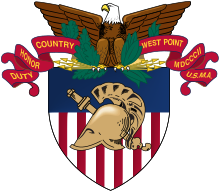
The United States Military Academy (USMA) (West Point or Army) is a United States service academy in West Point, New York. It was originally established as a fort during the American Revolutionary War, as it sits on strategic high ground overlooking the Hudson River 50 miles (80 km) north of New York City. It is the oldest of the five American service academies and educates cadets for commissioning into the United States Army.
Candidates for admission must apply directly to the academy and receive a nomination, usually from a member of Congress. Other nomination sources include the president and vice president. Students are officers-in-training and are referred to as "cadets" or collectively as the "United States Corps of Cadets" (USCC). The Army fully funds tuition for cadets in exchange for an active duty service obligation upon graduation. About 1,300 cadets enter the academy each July, with about 1,000 cadets graduating. The academic program grants a Bachelor of Science degree with a curriculum that grades cadets' performance upon a broad academic program, military leadership performance, and mandatory participation in competitive athletics. (Full article...)
Portal article 22
Portal:National Register of Historic Places/Portal article/22
The Pennsylvania State Capitol is the seat of government for the U.S. state of Pennsylvania located in downtown Harrisburg which was designed by architect Joseph Miller Huston in 1902 and completed in 1906 in a Beaux-Arts style with decorative Renaissance themes throughout. The capitol houses the legislative chambers for the Pennsylvania General Assembly, made up of the House of Representatives and the Senate, and the Harrisburg chambers for the Supreme and Superior Courts of Pennsylvania, as well as the offices of the Governor and the Lieutenant Governor. It is also the main building of the Pennsylvania State Capitol Complex.
The seat of government for the state was initially in Philadelphia, then was relocated to Lancaster in 1799 and finally to Harrisburg in 1812. The current capitol, known as the Huston Capitol, is the third state capitol building built in Harrisburg. The first, the Hills Capitol, was destroyed in 1897 by a fire. The second, the Cobb Capitol, was left unfinished when funding was discontinued in 1899. (Full article...)
Portal article 23
Portal:National Register of Historic Places/Portal article/23
Washington Square, also known as Washington Square Park, is a park in Chicago, Illinois. A registered historic landmark that is better known by its nickname Bughouse Square (derived from the slang of bughouse referring to mental health facilities), it was the most celebrated open air free-speech center in the country as well as a popular Chicago tourist attraction. It is located across Walton Street from Newberry Library at 901 N. Clark Street in the Near North Side community area of Chicago, Illinois, United States. It is Chicago's oldest existing small park. It is one of four Chicago Park District parks named after persons surnamed Washington (the others being Washington Park, Harold Washington Park, and Dinah Washington Park). It was added to the National Register of Historic Places on May 20, 1991. (Full article...)
Portal article 24
Portal:National Register of Historic Places/Portal article/24
The Lynde Point Light or Lynde Point Lighthouse, also known as Saybrook Inner Lighthouse, is a lighthouse in Connecticut, United States, on the west side of the mouth of the Connecticut River on the Long Island Sound, Old Saybrook, Connecticut. The first light was a 35 feet (11 m) wooden tower constructed by Abisha Woodward for $2,200 and it was completed in 1803. A new lighthouse was eventually needed and a total of $7,500 was appropriated on July 7, 1838. Jonathan Scranton, Volney Pierce, and John Wilcox were contracted to build the new 65-foot (20 m) octagonal brownstone tower. It was constructed in 1838 and lit in 1839. The lighthouse was renovated in 1867 and had its keeper's house from 1833 replaced in 1858 with a Gothic Revival gambrel-roofed wood-frame house. In 1966, the house was torn down and replaced by a duplex house. The original ten lamps were replaced in 1852 with a fourth-order Fresnel lens, and with a fifth-order Fresnel lens in 1890. Lynde Point Lighthouse used whale oil until 1879 when it switched to kerosene. It was electrified in 1955 and fully automated by the United States Coast Guard in 1978. In 1990, it was added to the National Register of Historic Places and is significant for its "superior stone work in the tapering brownstone walls". (Full article...)
Portal article 25
Portal:National Register of Historic Places/Portal article/25
The Metropolitan Life Insurance Company Tower (colloquially known as the Met Life Tower and also as the South Building) is a skyscraper occupying a full block in the Flatiron District of Manhattan in New York City. The building is composed of two sections: a 700-foot-tall (210 m) tower at the northwest corner of the block, at Madison Avenue and 24th Street, and a shorter east wing occupying the remainder of the block bounded by Madison Avenue, Park Avenue South, 23rd Street, and 24th Street. The South Building, along with the North Building directly across 24th Street, comprises the Metropolitan Home Office Complex, which originally served as the headquarters of the Metropolitan Life Insurance Company (now publicly known as MetLife).
The South Building's tower was designed by the architectural firm of Napoleon LeBrun & Sons and erected between 1905 and 1909. Inspired by St Mark's Campanile, the tower features four clock faces, four bells, and lighted beacons at its top, and was the tallest building in the world until 1913. The tower originally included Metropolitan Life's offices, and since 2015, it has contained a 273-room luxury hotel known as the New York Edition Hotel. The tower was designated as a city landmark by the New York City Landmarks Preservation Commission in 1989, and was listed on the National Register of Historic Places in 1972. It was also made a National Historic Landmark in 1978. (Full article...)
Portal article 26
Portal:National Register of Historic Places/Portal article/26
The Daily News Building, also known as The News Building, is a skyscraper at 220 East 42nd Street in the Turtle Bay neighborhood of Midtown Manhattan in New York City. The original building was designed by architects Raymond Hood and John Mead Howells in the Art Deco style, and was erected between 1928 and 1930. A later addition was designed by Harrison & Abramovitz and built between 1957 and 1960.
The Daily News Building consists of a 36-story tower that is 476 feet (145 m) tall, as well as two shorter additions extending east to Second Avenue. Its architectural features include a large granite entrance at 42nd Street and a rotunda lobby with a rotating globe. The original structure is an L-shaped building that faces 41st Street to the south, Second Avenue to the east, and 42nd Street to the north, with a longer frontage on 41st Street than on 42nd Street. The annex, along 42nd Street and Second Avenue, gives the present building a rectangular lot. (Full article...)
Portal article 27
Portal:National Register of Historic Places/Portal article/27
The Asser Levy Recreation Center is a recreational facility in the Kips Bay neighborhood of Manhattan in New York City, composed of the Asser Levy Public Baths and Asser Levy Playground. It is bounded by East 23rd Street to the south, East 25th Street to the north, and FDR Drive to the east. Along with the former Asser Levy Place to the west, it was named after Asser Levy, one of New York City's first Jewish citizens and a strong and influential advocate for civil liberties.
The Asser Levy Public Baths, the recreation center's main building, was designed by Arnold W. Brunner and Martin Aiken. Its main entrance on Asser Levy Place consists of two large arches flanked by pairs of columns. Inside are recreational rooms, a swimming pool, and lockers. It originally had separate waiting rooms and showers for men and women, though the waiting rooms were subsequently combined and the showers relocated. Outdoor recreational facilities, including additional swimming pools and the playground, surround the bathhouse. (Full article...)
Portal article 28
Portal:National Register of Historic Places/Portal article/28

Rika's Landing Roadhouse, also known as Rika's Landing Site or the McCarty Roadhouse, is a roadhouse located at a historically important crossing of the Tanana River, in the Southeast Fairbanks Area, Alaska, United States. It is off mile 274.5 of the Richardson Highway in Big Delta.
The roadhouse is named after Rika Wallen, who acquired it from John Hajdukovich and operated it for many years. It became a hub of activity in that region of the interior. With the construction of the ALCAN (now Alaska) Highway and the replacement of the ferry with a bridge downstream, traffic moved away and patronage declined. The roadhouse was added to the National Register of Historic Places in 1976, and is now a centerpiece of Big Delta State Historical Park, also listed on the National Register. (Full article...)
Portal article 29
Portal:National Register of Historic Places/Portal article/29
Rockefeller Center is a complex of 19 commercial buildings covering 22 acres (89,000 m2) between 48th Street and 51st Street in the Midtown Manhattan neighborhood of New York City. The 14 original Art Deco buildings, commissioned by the Rockefeller family, span the area between Fifth Avenue and Sixth Avenue, split by a large sunken square and a private street called Rockefeller Plaza. Later additions include 75 Rockefeller Plaza across 51st Street at the north end of Rockefeller Plaza, and four International Style buildings on the west side of Sixth Avenue.
In 1928, Columbia University, the owner of the site, leased the land to John D. Rockefeller Jr., who was the main person behind the complex's construction. Originally envisioned as the site for a new Metropolitan Opera building, the current Rockefeller Center came about after the Met could not afford to move to the proposed new building. Various plans were discussed before the current one was approved in 1932. Construction of Rockefeller Center started in 1931, and the first buildings opened in 1933. The core of the complex was completed by 1939. Described as one of the greatest projects of the Great Depression era, Rockefeller Center became a New York City designated landmark in 1985 and a National Historic Landmark in 1987. The complex and associated land has been controlled since 2000 by Tishman Speyer, which bought the property for $1.85 billion. (Full article...)
Portal article 30
Portal:National Register of Historic Places/Portal article/30
Grand Central Station was a passenger railroad terminal in downtown Chicago, Illinois, from 1890 to 1969. It was located at 201 West Harrison Street on a block bounded by Harrison, Wells and Polk Streets and the Chicago River in the southwestern portion of the Chicago Loop. Grand Central Station was designed by architect Solon Spencer Beman for the Wisconsin Central Railroad (WC), and was completed by the Chicago and Northern Pacific Railroad.
The Baltimore and Ohio Railroad purchased the station in 1910 and used it as the Chicago terminus for its passenger rail service, including its Capitol Limited service to Washington, D.C. Major tenant railroads included the Soo Line Railroad, successor to the Wisconsin Central, the Chicago Great Western Railway, and the Pere Marquette Railway. The station opened December 8, 1890, closed November 8, 1969, and was demolished in 1971. (Full article...)







